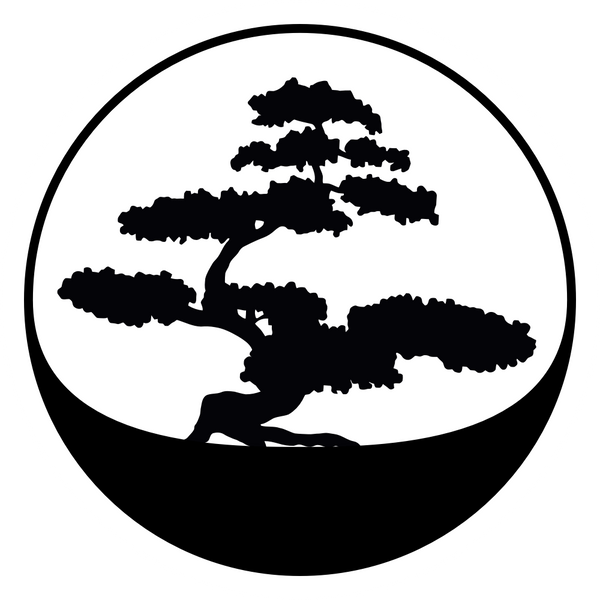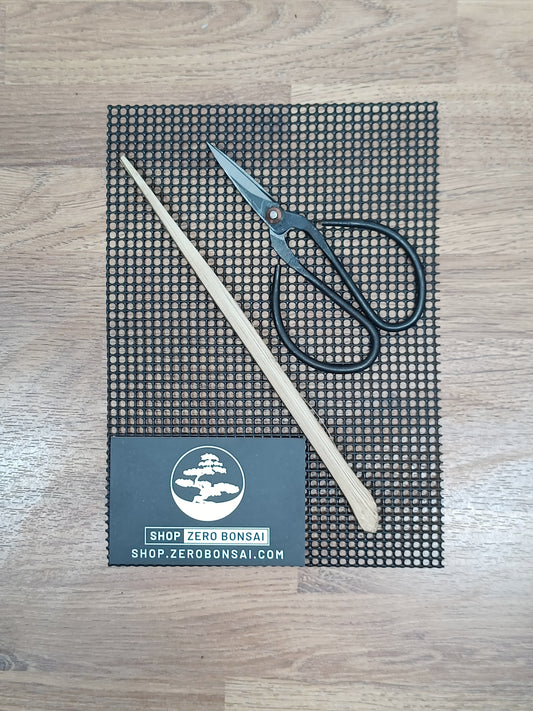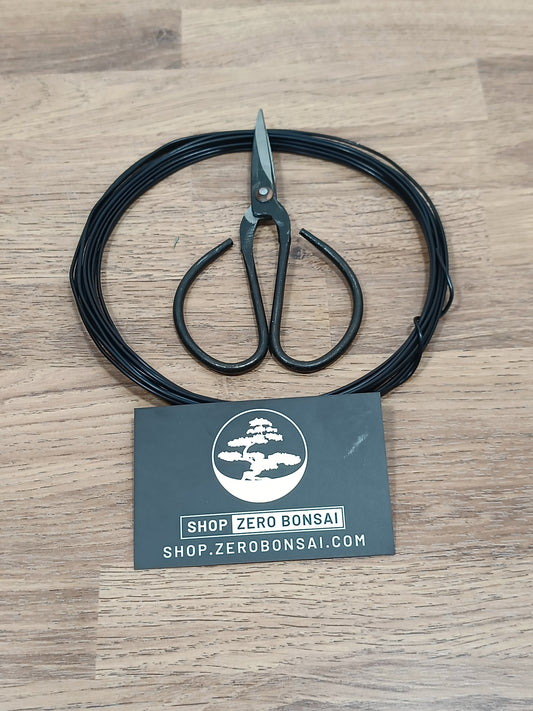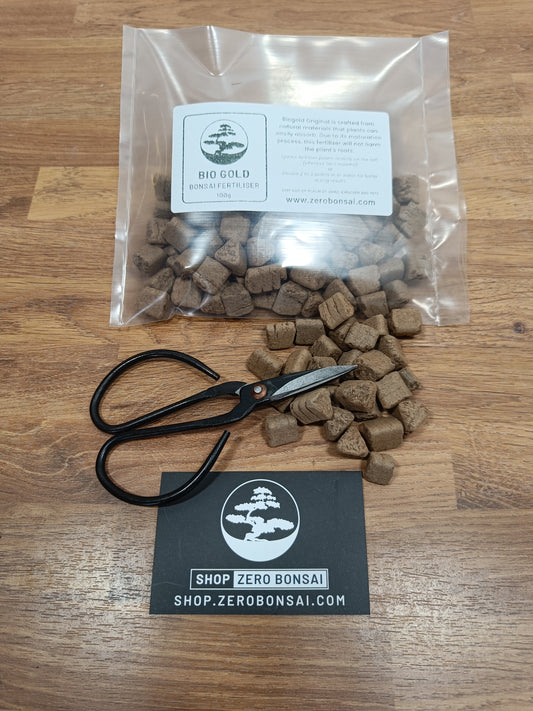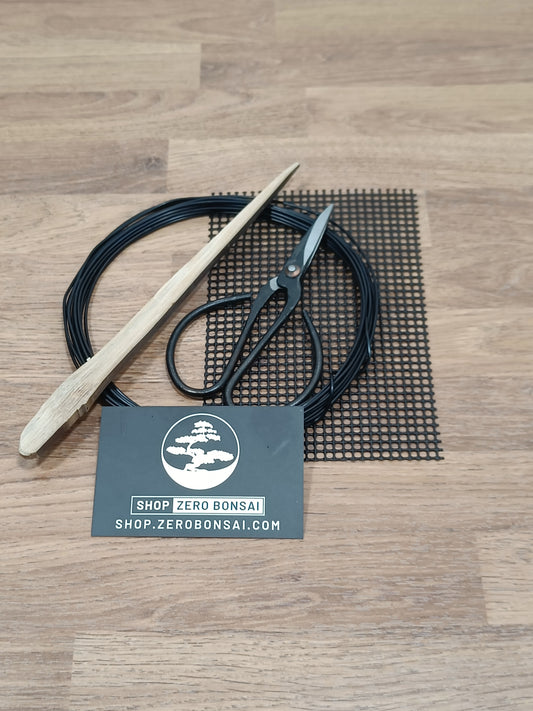Repotting a bonsai is essential to ensure the health and growth of the tree. While repotting a regular pot-plant involves transferring it to a larger container, bonsai repotting is a bit different. The main goal of repotting a bonsai is to introduce fresh compost around the root system, allowing it to form fine feeder roots and provide a suitable environment for the tree to thrive. However, in bonsai, the size of the container is not only a functional aspect but also a design element that is carefully selected to complement the tree's overall aesthetic. This is why bonsai trees undergo root pruning.
Root pruning has a side effect of increasing the density of the root ball. When roots are trimmed, new roots emerge from the removed root tips. Over time, as the root ball is repeatedly pruned, the root system becomes denser and denser. Within a well-developed root ball, dozens of fine feeder roots can occupy the same volume of soil that one unpruned root would typically use. So, even though the size of the root ball is regularly reduced, the actual volume of root within a certain amount of soil increases, providing sufficient support for the tree's canopy.
It's important to note that root pruning does not stunt or dwarf the tree in any way. While the tree may experience a slight decrease in vigor for about six weeks after root pruning, it regenerates its root system during this period. This effect is more noticeable in evergreen tropical bonsai trees. However, after this short adjustment period, the tree becomes even more vigorous than before as new feeder roots develop in the new soil.
The best time to repot a bonsai tree is when it is dormant. Repotting during this period reduces stress on the tree, as it doesn't have to supply water and nutrients to its leaves. In the case of evergreen bonsai trees, the supply of nutrients from the roots is minimal during dormancy. Repotting and root pruning a tree that is actively growing and supporting a full canopy of leaves would lead to foliage loss due to desiccation. The roots wouldn't be able to provide sufficient water and nutrients to the leaves. Repotting during the growing season is highly stressful for almost all tree species and can often result in death or a significant loss of vigor.
Bonsai trees should be repotted when they are dormant or when there is a minimal requirement for the roots to supply nutrients to the rest of the tree. The exact timing of repotting depends on how long injured or trimmed roots will remain exposed to moisture and frost. The root system fully repairs itself when the tree starts to grow in the spring. Therefore, repotting a tree early in winter may leave the root tips vulnerable to infection, root rot, and frost for several months. Repotting closer to the time when the tree starts to grow reduces the time that the cut roots are exposed to soil moisture and freezing conditions. Longer daylight hours and slightly warmer conditions during this period also promote new growth.
The ideal time to repot a bonsai tree is at the very end of its dormant period, just as it is about to start growing again. The tree is still dormant, but the repair of trimmed roots is fairly immediate as the tree prepares to start growing. The exact timing varies between tree species and depends on local climate and individual plants. It's not realistic to expect to determine the exact date for repotting a particular species, as there is significant variation between different climates and subtle changes in weather conditions from year to year in the same geographical area.
To determine when a bonsai tree is ready to be repotted, it's important to observe each tree closely. During winter, deciduous species will have small leaf buds that are held closely against the branches. As the tree starts to come out of dormancy, these leaf buds will extend and swell in preparation for the emergence of new leaves. Most evergreen species, including coniferous trees, will also display new buds starting to extend and emerge. It can be more challenging to judge when to repot tropical evergreen species such as Ficus, Serissa, and Sageretia, which are grown indoors during the winter in the UK and Northern Europe. Generally, these species slow their growth rate during the shorter daylight hours of the winter months, making it suitable to repot them during this semi-dormant period.
Now, let's talk about how often bonsai trees should be repotted. Bonsai trees need repotting when they become pot-bound, meaning their roots entirely fill the pot and there are long roots circling the inside. In some cases, roots may even regrow out of the drainage holes at the base of the pot. The time it takes for a tree to become root-bound varies from one to five years, depending on the species and its level of vigor. Fast-growing species and individual plants, such as Larch, tend to require more frequent repotting and root pruning. Other factors that contribute to the need for regular root pruning include the size of the container, the development of the root ball, and the age of the tree. Older trees are less vigorous and require less frequent repotting.
It's a good practice to check the condition of the roots annually in spring. Gently ease the tree out of its pot and examine the roots. If the roots are still contained within the soil, you can return the tree to the pot, and repotting can be postponed for another year. When repotting, always use a new soil mix to avoid disease and help the tree establish healthy and vigorous growth. A regular soil mix of Japanese Akadama, Pumice, and Lava Rock is a good starting point for most trees. However, some species may require slight variations in the ratio of these components. For your convenience, we stock a ready-mixed and well-tested soil mix in various quantities in our store, along with repotting kits that provide everything you need to repot your bonsai tree.
We hope this information helps you better understand when and how to repot your bonsai tree. If you have any more questions, feel free to contact us here at Zero Bonsai!
